Tucked away in the rolling hills of Tuscany, the Chianti region offers so much more than its famous red wines. I discovered this on my recent trip through its charming stone villages, each with its own unique character and hidden treasures. The picturesque area was put on the map by Chianti Classico wines, but it’s the medieval villages like Greve, Castellina, and tiny Montefioralle that truly capture the heart of Tuscany.
As I wandered through Castellina-in-Chianti, one of the region’s most important villages, I found myself stepping back in time along narrow cobblestone streets lined with local shops and wine cellars. The village-hopping experience connects you with authentic Italian life that many tourists miss when focusing solely on wine tasting.
From Radda to Panzano, each stop along Wine Road #222 reveals a new perspective on Tuscan culture.
My favorite discovery was Montefioralle, a tiny stone village hidden in the hills near Greve. Here, life moves at a slower pace, with locals greeting visitors warmly and stunning views around every corner. Village-hopping through Chianti offers the perfect mix of wine culture, history, and those magical moments of connection that make travel so rewarding.

Unearthing Chianti’s Hidden Gems
While Chianti’s wines steal the spotlight, the true magic lies in its tucked-away villages perched atop rolling hills, each offering unique experiences beyond the vineyards.
The Allure of Castellina and Radda in Chianti
Castellina in Chianti captured my heart immediately with its perfect hilltop position. Walking through the ancient Via delle Volte, a medieval covered street, I felt transported back in time. The 14th-century fortress now houses the Archaeological Museum, displaying fascinating Etruscan artifacts.
Just a short drive away, Radda in Chianti might be my favorite discovery. This medieval town sits nearly 2,000 feet above sea level, offering breathtaking 360-degree views of vineyards and olive groves.
I spent hours exploring Radda’s narrow cobblestone streets, admiring well-preserved stone buildings adorned with colorful flowers. The Palazzo del Podestà with its ancient coats of arms is definitely worth visiting.
Don’t miss stopping at one of the small enotecas to sample local wines paired with pecorino cheese and wild boar salami.
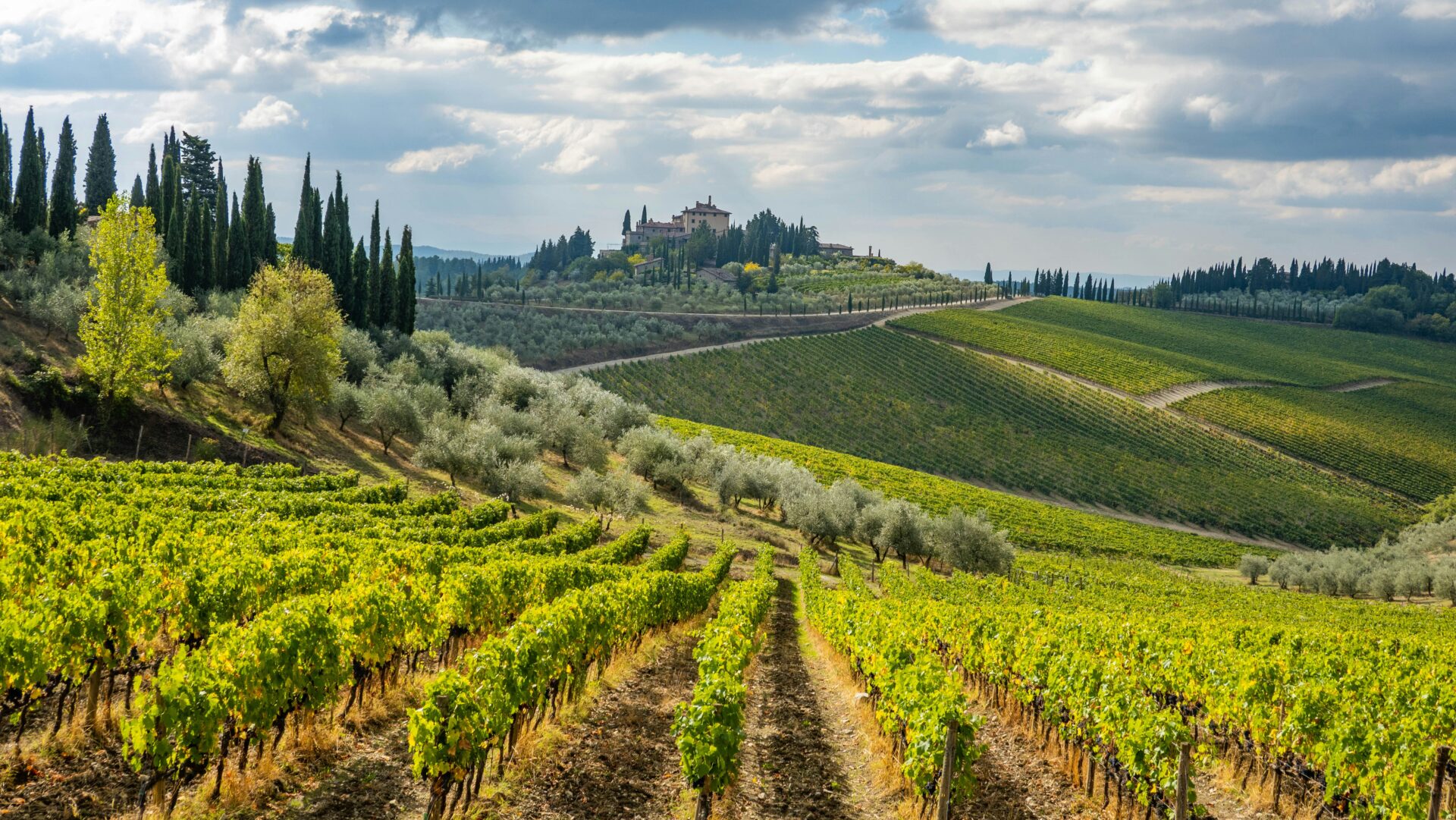
Historic Monteriggioni: A Time Capsule Village
Monteriggioni looks like it jumped straight out of a fairytale. This perfectly preserved medieval fortress village is encircled by imposing stone walls with 14 towers that have stood since the 13th century.
Walking through the single main gate, I entered a world frozen in time. The central piazza, Piazza Roma, serves as the heart of this tiny community.
What makes Monteriggioni special is its authenticity. Unlike more touristy towns, it maintains a peaceful atmosphere. I climbed the accessible portions of the walls for stunning views of the Tuscan countryside.
The village hosts a fascinating medieval festival in July called “Monteriggioni di Torri si Corona,” featuring period costumes, music, and food that recreates life as it was centuries ago.

Discovering Artisanal Crafts in Gaiole in Chianti
Gaiole in Chianti offers a perfect blend of wine culture and traditional craftsmanship. This charming village sits at the eastern edge of Chianti Classico and serves as an excellent base for exploring nearby castles.
I was surprised to discover several artisan workshops here. Local craftspeople continue centuries-old traditions, creating hand-painted ceramics, leather goods, and wrought ironwork.
My favorite discovery was a small workshop where an elderly woman wove traditional Tuscan textiles on a wooden loom. Her colorful table linens and scarves made perfect souvenirs.
Nearby Castello di Brolio is worth visiting not only for its impressive architecture but also for its museum showcasing traditional farming implements and winemaking tools.
Don’t leave without trying Gaiole’s specialty dessert, cantucci, almond biscuits perfectly paired with sweet Vin Santo wine.

The Epicurean Journey
Traveling through Chianti offers a feast for all senses, where food and wine become the gateway to understanding the region’s soul. The landscape itself seems edible – rolling hills dotted with vineyards, silver-green olive groves, and farmhouses promising authentic flavors.
Tuscan Flavors: From Vineyards to Olive Groves
The heart of Chianti’s gastronomy begins in its fertile soil. Walking through the vineyards, I was struck by how the same terroir that produces world-class wines also nurtures exceptional olive oil. Many estates offer tastings of both their wines and oils, a perfect pairing of Tuscany’s liquid gold treasures.
The seasonal rhythm dictates the menu here. Spring brings tender artichokes and fresh fava beans, while summer offers sun-ripened tomatoes that taste nothing like those from supermarkets back home.
Fall is my favorite season – the grape harvest transforms the region into a hive of activity, while truffle hunters and their dogs scour the forests for buried treasures. The olive harvest follows closely, when families gather to press their crop into vibrant green oil that burns pleasantly at the back of your throat.
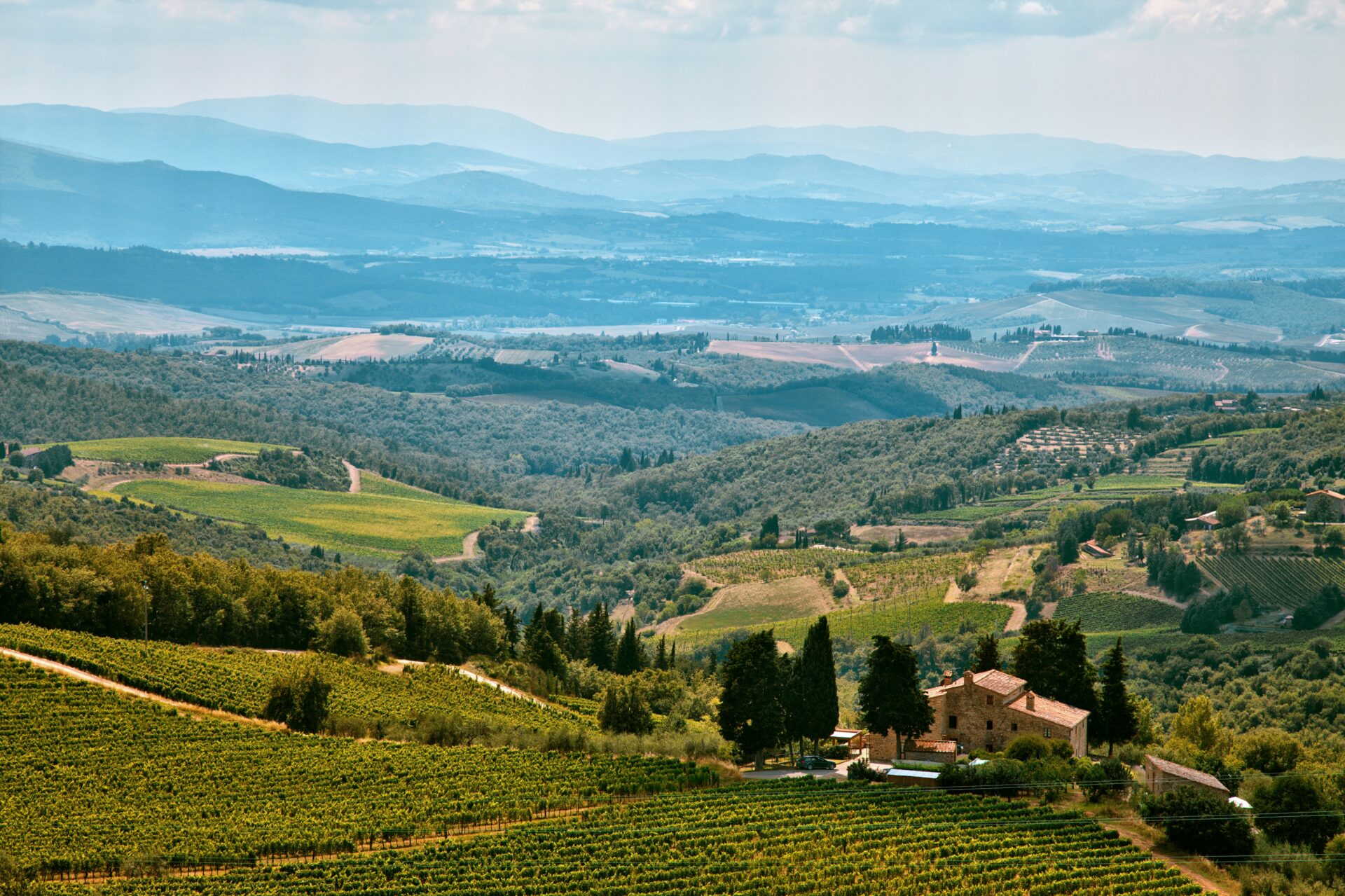
Savoring Chianti Classics and Local Delicacies
A typical Tuscan lunch in Chianti begins with antipasti – local pecorino cheese, prosciutto, and crostini topped with chicken liver pâté. The pasta course might feature pappardelle with wild boar ragù, its rich flavor pairing perfectly with Chianti Classico wine.
Meat lovers rejoice in the famous bistecca alla fiorentina, a T-bone steak grilled over wood coals and seasoned simply with olive oil and salt. The simplicity of ingredients highlights their exceptional quality.
Don’t miss ribollita, a hearty vegetable and bread soup that embodies Tuscan peasant cuisine – economical yet delicious. I found a small trattoria in Castellina where the owner still makes it according to his grandmother’s recipe.
For dessert, cantuccini cookies dipped in Vin Santo (sweet dessert wine) provide the perfect finale. Or try artisanal gelato from small producers who use local ingredients like Chianti wine or Tuscan honey.

The Tradition of Agriturismo
Staying at an agriturismo offers the most authentic food experience in Chianti. These working farms open their doors to visitors, providing accommodations and farm-to-table dining experiences that connect you directly to the land.
I spent three unforgettable days at a family-run agriturismo near Gaiole. Each morning began with homemade bread, jams from their orchard, and eggs collected that day. The mother taught cooking classes where we made pasta by hand and learned family recipes passed down through generations.
Many agriturismi offer vineyard tours ending with wine tastings paired with their homemade products. The wine tastes even better when you’ve walked among the vines that produced it and met the people who made it.
The slow pace of agriturismo life presents a welcome contrast to rushed urban existence. Meals stretch for hours as courses arrive unhurried, conversation flows, and the line between guest and family gradually blurs.

Exploring the Landscapes
The Chianti region’s true magic lies in its breathtaking landscapes, which offer travelers an ever-changing panorama of rolling hills, ancient olive groves, and sun-drenched vineyards. Each turn reveals a new postcard-worthy scene that defines the quintessential Tuscan countryside.
SR222: A Route with a View
The famed SR222, or Strada Regionale 222, is my favorite road in all of Tuscany. This winding route connects Florence to Siena, guiding travelers through the heart of Chianti Classico territory.
As I drive this road, the views constantly change – from dramatic hillside vineyards to sudden glimpses of stone villages perched on distant hills. I recommend pulling over at the viewpoints near Panzano, where the entire valley spreads before you like a living Renaissance painting.
The road itself becomes part of the experience. In spring, wildflowers dot the roadside, while autumn transforms the landscape into a tapestry of reds, oranges, and golds. Make sure to drive slowly – the curves can be sharp, but each new vista is worth savoring.
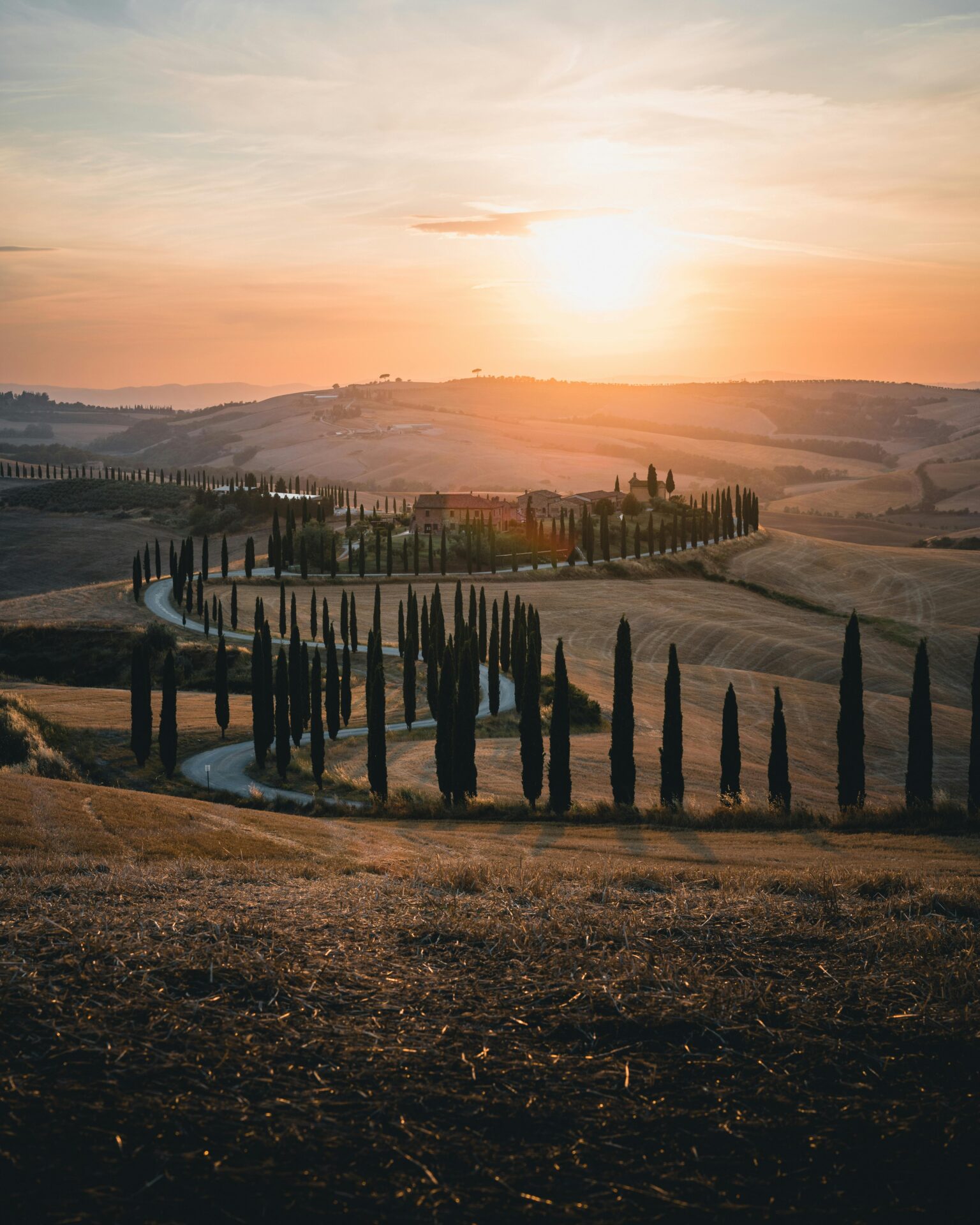
Adventures Off the Beaten Path
To truly explore Chianti’s hidden treasures, I often venture beyond the main roads. Renting an off-road vehicle opens up a world of unmarked white gravel roads, called “strade bianche,” that crisscross the countryside.
These paths lead to places you won’t find in guidebooks – abandoned stone farmhouses, tiny family wineries, and panoramic lookouts where I’ve spent hours without seeing another soul. My favorite discovery was a hidden valley near Castellina in Chianti, accessible only by a bumpy track that revealed an intact medieval water mill.
Hiking trails also network throughout the region. The path between Greve and Montefioralle offers incredible views and passes through olive groves where local farmers still harvest by hand. Always carry water and wear proper shoes – the terrain can be challenging but infinitely rewarding.

The Idyllic Tuscan Countryside
The iconic Tuscan landscape that surrounds me in Chianti is more than just pretty scenery – it’s a living agricultural system shaped by centuries of human care.
Those famous cypress trees aren’t just photogenic; they were traditionally planted as boundary markers and windbreaks. I love photographing them at sunrise when they cast long shadows across the misty fields. The olive groves, some containing trees over 500 years old, produce the region’s prized extra virgin olive oil.
The terraced vineyards follow the natural contours of the hills, creating geometric patterns that change with the seasons. In summer, lush green vines contrast with the golden wheat fields. Small stone farmhouses, called “casali,” dot the landscape, many now restored as vacation homes or boutique accommodations.
Wildlife thrives here too. During early morning drives, I’ve spotted wild boars, pheasants, and porcupines crossing between patches of oak forest that punctuate the cultivated fields.

Cultural Encounters and Timeless Traditions
The heart of Chianti holds more than just vineyards and wine tastings. Each stone wall and cobbled street tells stories of noble families, merchant traditions, and architectural marvels that have shaped this iconic Tuscan landscape.
Castles and the Nobles Who Built Them
The Ricasoli family has left an indelible mark on Chianti’s landscape through the magnificent Castello di Brolio. I wandered through its neo-Gothic rooms feeling centuries of history all around me. The family has owned this property since 1141 and famously created the original Chianti Classico wine formula in the 1870s.
Castello di Spaltenna offers a different but equally enchanting experience. This former monastery turned luxury hotel sits in a picturesque valley surrounded by cypress trees. When I visited, the golden afternoon light made the stone walls glow almost magically.
Many castles throughout the Chianti area offer wine tastings directly from their cellars. These historic properties provide a perfect blend of cultural immersion and sensory pleasure that simply can’t be replicated elsewhere.
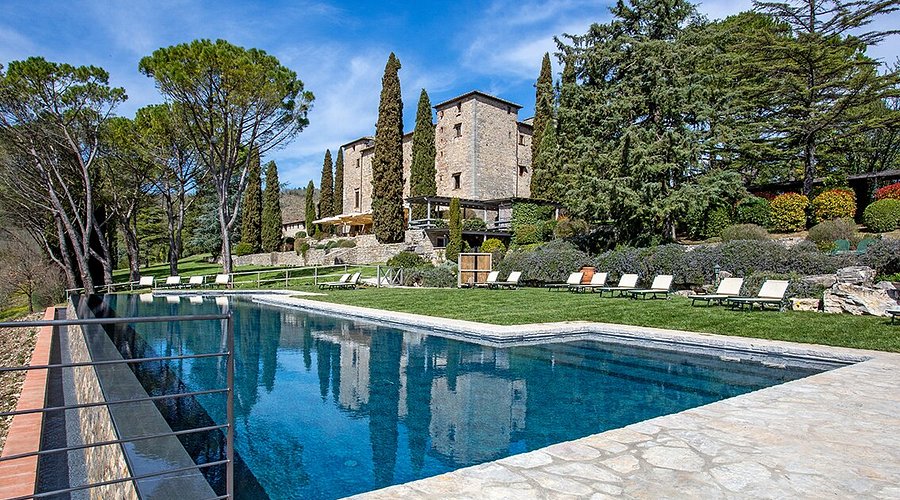
Greve and Panzano: Chianti’s Market Towns
Greve’s triangular piazza has hosted markets since medieval times. On Saturday mornings, I love browsing stalls filled with local cheeses, cured meats, and handcrafted souvenirs. The atmosphere buzzes with locals catching up while doing their weekly shopping.
Panzano’s charm lies in its famous butcher shop run by Dario Cecchini. His theatrical approach to butchery has made him somewhat of a celebrity. I still remember his booming voice reciting Dante while carving perfect bistecca alla fiorentina.
These market towns offer the most authentic glimpse into everyday Chianti life. Seasonal festivals celebrate everything from wine harvests to olive picking. In autumn, the Expo del Chianti Classico transforms Greve with tastings, music, and dancing that last well into the night.

San Gimignano: The Town of Fine Towers
San Gimignano’s skyline of medieval towers can be spotted from miles away across the rolling hills. Once numbering 72, today 14 towers remain as testimony to wealthy families who built ever-taller structures to showcase their prosperity.
Walking through the UNESCO-protected center feels like stepping back in time. I always head to Gelateria Dondoli for world-champion gelato. Then, I climb Torre Grossa for panoramic views of Tuscany’s patchwork landscape.
The town gets crowded during peak hours, so I recommend visiting early morning or late afternoon. The quiet side streets hold small workshops where artisans still practice traditional crafts like ceramics and leatherworking. These are perfect for authentic souvenirs that support local traditions.

Crafting Your Village-Hopping Itinerary
Planning a journey through Chianti’s charming villages requires thoughtful preparation to maximize your experience among the rolling hills, vineyards, and historic towns. A well-crafted itinerary will help you balance wine tasting, cultural exploration, and authentic local experiences.
Selecting Your Base: Florence or Siena?
I’ve found that choosing the right home base makes all the difference in a Chianti adventure. Florence offers excellent transportation connections and organized day tours into wine country. From here, I can easily hop on a bus or join a guided tour that covers multiple villages in one day.
Siena, meanwhile, sits closer to the heart of Chianti. I love staying here because I can reach charming villages like Castellina and Radda within 30 minutes by car. The smaller roads and intimate setting give me a more authentic feeling of Tuscan life.
My recommendation? If you’re without a car, Florence makes sense. With a rental car, I prefer Siena for its central location and less hectic atmosphere. Either way, book accommodations in advance, especially during harvest season (September-October).

Pairing Wineries and Villages
I always plan my village visits around strategic winery stops. In Greve in Chianti, I start my morning exploring the charming triangular piazza before visiting nearby Castello di Verrazzano for a mid-day tasting.
When visiting Castellina, one of the most important centers for Chianti Classico, I pair it with smaller family-run wineries. This creates a perfect balance between cultural sightseeing and wine education.
Sample Day Itinerary:
- 9:00 AM: Breakfast in Radda’s town center
- 10:30 AM: Explore Radda’s medieval walls and shops
- 12:30 PM: Lunch at a local trattoria
- 2:30 PM: Wine tasting at a nearby farmhouse
- 5:00 PM: Drive to Castellina for evening exploration
I recommend limiting yourself to 2-3 villages per day to avoid rushing. Quality time in fewer places creates more meaningful experiences.
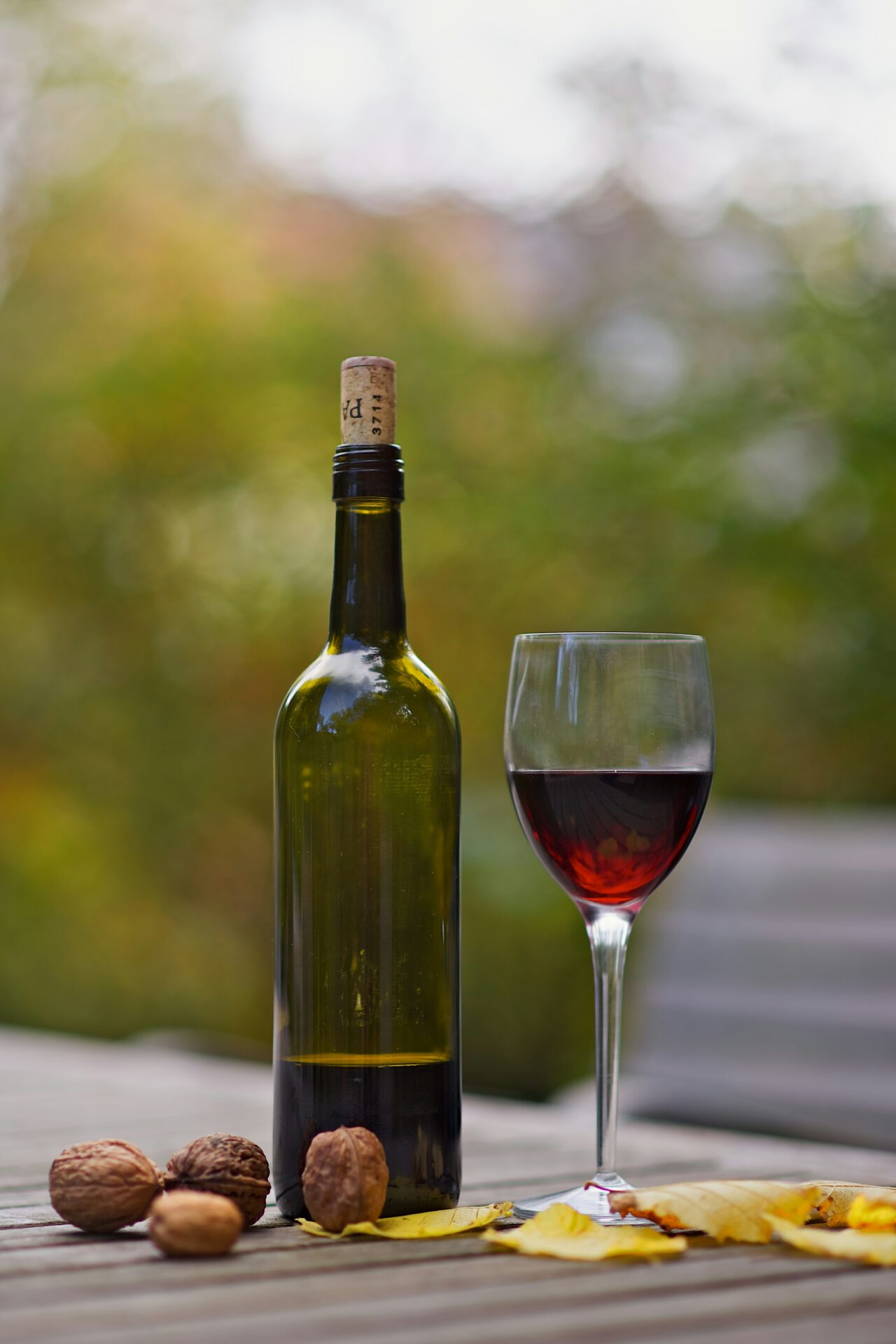
Incorporating Local Events and Festivals
Timing my Chianti visits around local festivals has given me some of my most memorable travel experiences. The Chianti Classico Wine Festival in Greve (September) offers tastings from dozens of producers in one convenient location.
Many villages host seasonal food festivals celebrating everything from wild boar to olive oil. I check local tourism websites before finalizing my itinerary to see what might be happening.
Even small hamlets come alive during harvest festivals in autumn. I’ve encountered impromptu street music, traditional dancing, and communal dinners simply by being in the right village at the right time.
Seasonal events also provide opportunities to connect with locals. I’ve found Italians eager to explain traditions and share stories. They especially enjoy seeing travelers take genuine interest in their celebrations.

